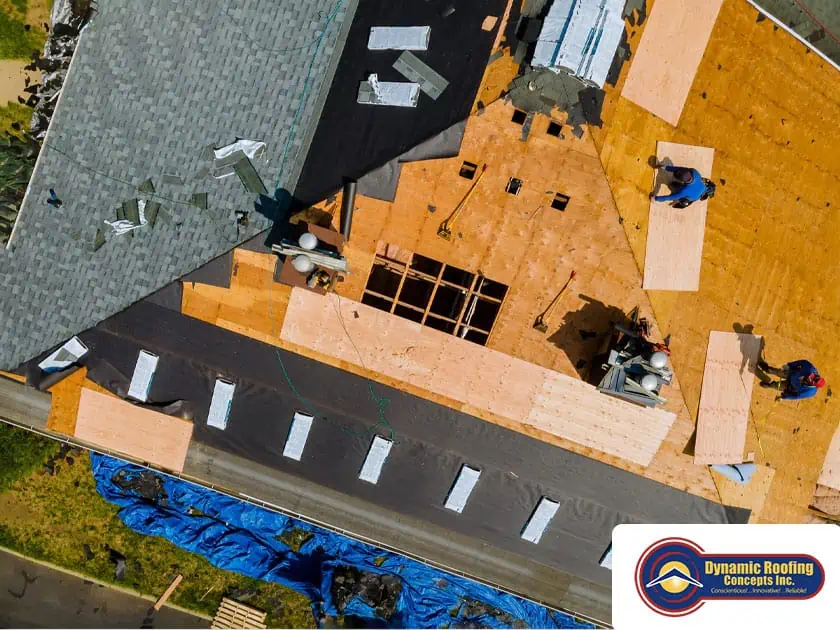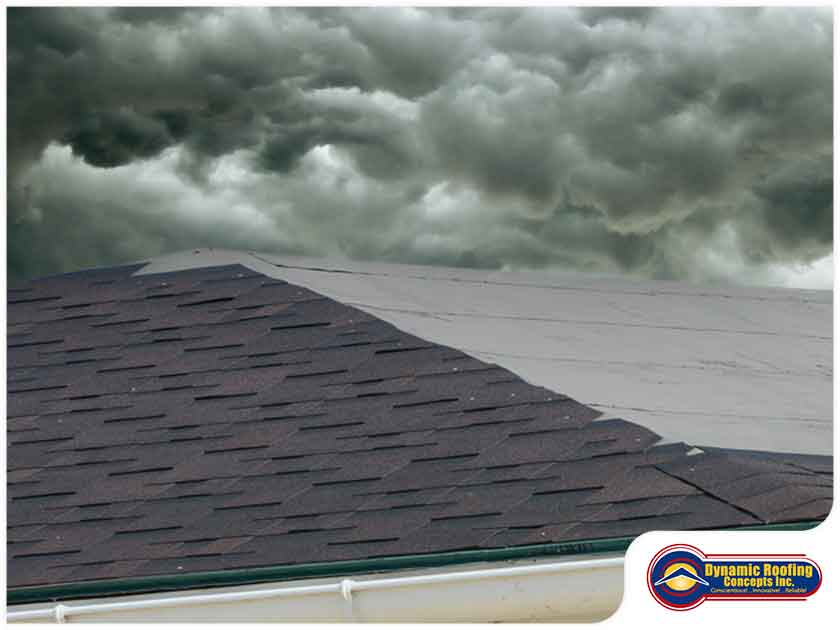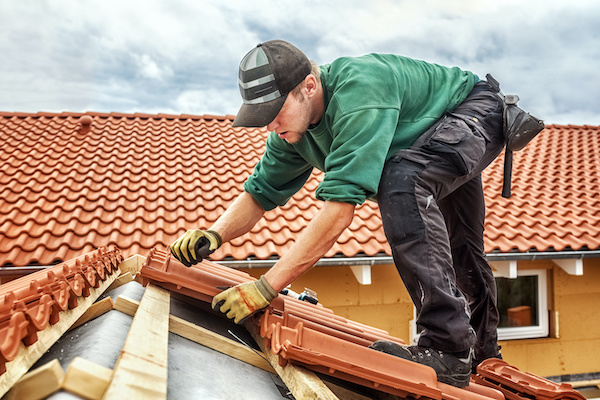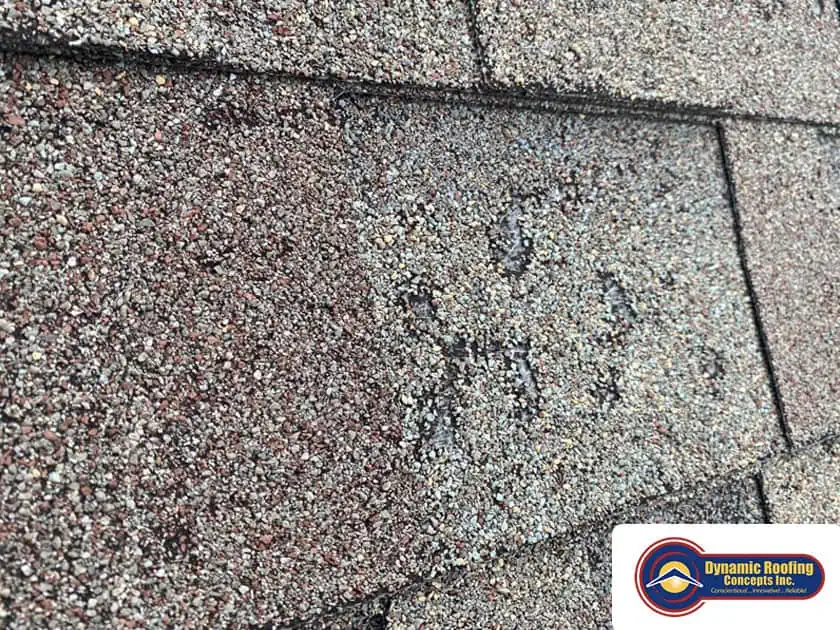

Share On:
Your roof is more than just a shelter; it's a critical component of your home's structural integrity. It shields you, endures extreme weather conditions, and maintains a comfortable living environment. However, the very elements it protects you from can also pose a threat to its longevity.
Granular loss may not be a term you're familiar with, but it's one that holds the key to your roof's health and durability. In this blog post, we will delve into the world of granular loss, breaking it down layer by layer – just like the asphalt shingles on your roof. We'll explore its causes, consequences, and most importantly, how you can take proactive steps to prevent it.
By the end of this guide, you'll be equipped with the knowledge and insights needed to ensure your entire roof stays strong, resilient, and beautiful for years to come.
Reach New Heights with Our Roofing Expertise! Your Trusted Roofing Company Lakeland FL
Granular Loss: What is it?
Before we dive deeper into the world of granular loss, let's begin by learning this term and understanding its profound importance in asphalt shingle roofs.
Granule Loss on Asphalt Shingle Roofs
Granular loss is a term that describes the gradual erosion or shedding of mineral granules from the surface of the asphalt shingle. These granules, often embedded in the shingles during the manufacturing process, play a pivotal role in the overall health and longevity of your roof.
Now, you might be wondering why these tiny, seemingly insignificant granules matter so much. Well, here's the secret: they are your roof's first line of defense against the harsh elements of Mother Nature.
Why Shingle Granules? They're Protective Coating!
Imagine your roof as a sturdy shield and those granules as its protective coating. These mineral granules serve as a shield against a barrage of environmental factors that your roof faces daily. They provide critical defense against UV rays, hail, rain, and wind – elements that could otherwise wreak havoc on your roof's surface.
Think of these granules as the armor that keeps your asphalt shingle roof resilient and able to endure the test of time. They prevent shingle deterioration, maintain the roof's structural integrity, and ensure your home remains dry and comfortable during heavy rains.
So, why is it essential to understand asphalt shingle granule loss? Because, as with any armor, it can weaken over time. Granular loss can compromise your roof's ability to protect your home effectively. It can lead to a host of problems, including leaks, reduced lifespan, and costly repairs.
Asphalt Shingle Granules Protect
Your roof is a complex and carefully engineered system designed to shield your home from the elements. Asphalt shingles, the most common roofing material in the United States, play a pivotal role in this system.
Asphalt Shingle Roof Layers
At the heart of every asphalt shingle lies a carefully crafted roof structure that combines form and function. The top layer, adorned with tiny mineral granules, is where the magic happens. These granules are no ordinary pebbles; they are the protectors your roof, against nature's onslaught.
Detect Granular Loss: When to call a Roofing Expert.
Think of these granules as your roof's armor. They shield the shingles from harmful ultraviolet light, hail, rain, and wind. Without them, your shingles would be vulnerable to the elements, and the integrity of your roof would be compromised. If you see granular loss on your asphalt shingle roof, it's time to call a roofing expert.
Roof Lifespan and Excessive Granule Loss
Asphalt shingles are known for their durability, but like all things, they have a lifespan. Mineral granule loss is one of the ways to detect if your roof is deteriorating.
Expected Lifespan: On average, asphalt shingles can last between 20 to 30 years, depending on various factors such as the quality of roofing materials and the installation process.
Factors Accelerating Wear and Tear: While asphalt shingles roofs are designed to withstand the test of time, they are not impervious to wear and tear. Severe weather, improper installation, inadequate ventilation, storm damage, normal wear, and damaged shingles can accelerate the aging process of your shingle roof. Granular loss is often a consequence of these factors.
Causes of Granular Loss
So, what causes granular loss on asphalt shingles?
Severe Weather and Granular Loss
Hail: Hail damage can be a formidable adversary for your roof. When hailstones pummel the surface of your shingles, they can dislodge those protective granules. The result? Gradual granular loss that can weaken your roof's defense allowing it to retain moisture and damage shingles leading to algae growth.
Wind: Strong winds and heavy storm can wreak havoc on your shingles. They can lift, curl, or even tear shingles away, leaving your roof vulnerable to granule loss and algae growth. Fast roof repair is necessary if you suspect wind damage. A professional roofing company can help you with roofing repairs.
Other Physical Factors:
Various physical factors, such as fallen debris, fiery debris, can also lead to lost granules on your shingles. If any of these elements have caused your shingles to shed granules and compromise your roof's durability call a roofing contractor.
Foot Traffic: While your roof may not be a typical walking surface, it's not immune to the occasional foot traffic. Whether it's maintenance work, or power washing your rooftop, these footsteps can lead to granular loss over time. Power washing can also lead to granules lost and is best done by a roofing contractor.
Trapped Moisture: Inadequate ventilation can lead to trapped heat and moisture in your attic. Moisture that gets trapped within your roofing system can weaken the adhesive properties of roof shingle granules. This trapped moisture can result from roof leaks, improper installation, or insufficient insulation.
Manufacturing Defects: While rare, roofing manufacturers' defects can also be a culprit. Shingles with defects may lose granules prematurely, leaving your roof vulnerable to environmental stressors.
Age-Related Changes: Over the years, your shingles deteriorate. This is due to a constant cycle of expansion and contraction when temperatures fluctuate. This natural aging process is completely normal to shingle granules. As the shingles age, they become less flexible, making it easier for granules to dislodge, especially during extreme weather conditions. Roof granule loss in older roofs is completely normal. If you notice roof leaks, shingle damage, or missing granules on your shingle surface, call a roofing professional.
Environmental Factors of Granule Loss
Your roof faces a constant battle against the elements, and it's essential to understand how environmental factors can contribute to granule loss.
Sun Exposure and Granule Loss
Sun exposure can also be a cause of granular loss for your roof. UV rays, can have a significant impact on your shingles' texture over time.
UV rays don't just weaken the shingle; they can also strip away the protective granules themselves. As the roof ages and becomes less flexible, the granules can become dislodged more easily, leaving your roof exposed to the elements.
Rainwater and Granule Loss
When rainwater flows over your shingles, it can dislodge granules over time. Moisture can weaken the adhesive properties of shingle granules making you shed loose granules right into your gutters and get washed away.
Elevate Your Roofing Experience with the Top Tampa Roofer
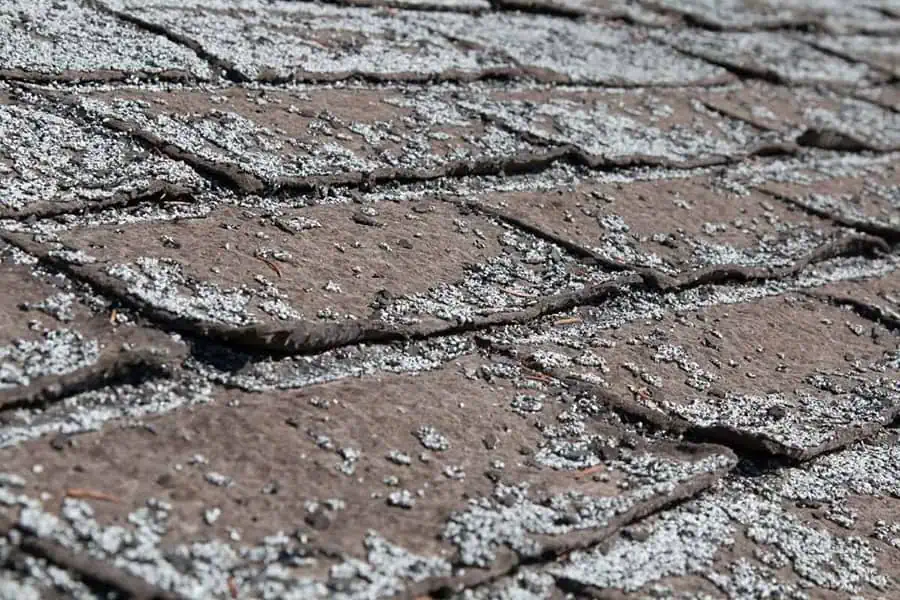
The Ramifications of Granule Loss
Expedited Roof Damage: Granular loss weakens your shingles' ability to protect your home. This can lead to the rapid deterioration of your roof, making it more susceptible to damage from hail, wind, and other external factors.
Roof Leak Risk: As granules are dislodged, the shingles become more loose and porous, increasing the likelihood of water infiltration. This can result in costly leaks, damaging your home's interior.
Reduced Lifespan: A roof suffering from granular loss may have a significantly shortened lifespan. Premature roof replacement is an expensive endeavor that can be avoided with proactive maintenance.
Aesthetic Issues: Beyond functionality, granular loss can impact the appearance of your roof. It may appear patchy or discolored, affecting the overall curb appeal of your home.
How To Prevent Granule Loss?
Now that we know what causes granule loss...how do we prevent it?
1. Routine Roof Maintenance
Regular inspections and roof maintenance can be your first line of defense against granule loss.
By scheduling regular roof inspection check-ups with a professional roofing contractor, like Dynamic Roofing Concepts, Inc., you can detect early signs of granular loss and other roofing issues. These inspections can uncover roofing problems that might not be immediately visible.
2. Timely Roof Repairs
Early detection allows for timely roof repairs, which can significantly extend the life of your roof. By addressing granular loss and other problems promptly, you can prevent further damage and costly roof repairs.
3. Quality Roofing Materials
Invest in high-quality roofing materials from reputable sources. Quality shingles are less likely to suffer from granular loss and can better withstand the rigors of the environment.
4. Professional Roofing Contractor
Seek guidance from expert roofing professionals, like Dynamic Roofing Concepts, Inc., who can recommend the best roofing materials for your specific needs. They can help you make informed decisions that will benefit your roof's longevity.
Recognizing and Repairing Granular Loss
Recognizing and addressing granular loss promptly can give your roof a second chance at longevity.
When choosing your asphalt shingles you should know that not all roof shingles are created equal, and the choice of asphalt shingles can significantly impact your roof's resilience.
1. Bald Spots
One of the most apparent signs of granular loss is the presence of bald spots on your shingles. These areas will appear shiny and devoid of granules, leaving the underlying asphalt exposed.
2. Patches of Granule Loss
Your roof might take on a patchy appearance, with some areas retaining granules while others appear bare. This inconsistency is a clear indication of granular loss.
3. Granules in Gutters
If you notice an accumulation of granules in your gutters, it's a strong sign of granule loss.
4. Increased Roofing Debris
An increase in roofing debris around your property, especially after heavy rain or wind, can be a sign that granules are being dislodged from your shingles.
5. Call a Roofing Contractor
Upon noticing any signs of granular loss, act swiftly and seek professional intervention. Attempting DIY repairs can often do more harm than good.
Roofing professionals have the experience and knowledge to assess the extent of granular loss and its impact on your roof and can come up with a plan to stop the granular loss and improve the overall condition of your roof.
If granular loss is a result of a covered event, such as a hail storm or wind damage, roofing professionals can help you navigate the insurance claim process for the necessary roof repairs or new roof replacement.
Clearwater Roofers: Your Clear Path to Excellence in Roofing Services
The Cost of Granular Loss
Granular loss isn't just a cosmetic concern; it has significant financial implications for homeowners.
Property Value: A well-maintained roof is a valuable asset when it comes to property value. A roof suffering from granular loss can negatively affect the curb appeal of your home and reduce its overall market value. Potential buyers may be deterred by the prospect of costly roof repairs or roof replacement.
Energy Costs and Insulation: The financial implications of granular loss extend beyond the roof itself and into your home's energy efficiency. Shingle granules play a crucial role in reflecting UV rays from the sun. As they deteriorate due to granular loss, your roof becomes less efficient at blocking these rays. This can result in increased heat absorption by your home, leading to higher indoor temperatures during the summer months. Granular loss can affect the insulation properties of your roof. As your roof absorbs more heat, your HVAC system may need to work harder to maintain a comfortable indoor temperature.
What to do about Granular Loss?
Early Detection: Regular inspections and vigilant monitoring of the same roof for signs of granular loss are your first lines of defense. By catching this issue early, you can prevent further damage and costly repairs.
Prevention is Key: We've explored various preventive measures, from routine roof maintenance and optimal roofing practices to choosing high-quality materials. These steps can significantly extend the life of your roof and reduce the risk of granular loss.
Professional Expertise: When it comes to your roof, a roofing professional with expertise is invaluable. Professional roofing contractors like Dynamic Roofing Concepts, Inc. have the experience and knowledge to assess, address, and prevent granular loss effectively.
Our commitment to your roof's health goes beyond immediate roof repairs; we focus on long-term reliability and the well-being of your home. If you suspect your asphalt shingle roof is losing granules we can help.
Contact us at 813-657-7663 for a free estimate, and let's work together to keep your roof in top shape for years to come.

